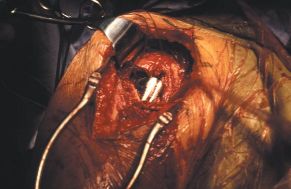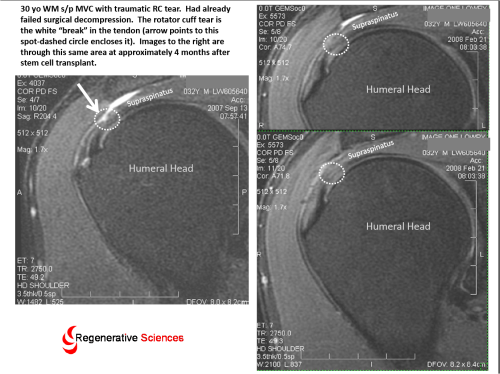Rotator cuff tears often result in pain over the front and outer aspect of the shoulder. The pain maybe increased when pushing upwards on the shoulder or reaching forward. Weakness may also be reported. Unfortunately pain and weakness do not make the diagnosis of a tear in the rotator cuff.
Park et. al., demonstrated that to best way to diagnose full-thickness rotator cuff tears on physical examination is when the painful arc test, the drop-arm sign, and weakness in external rotation were all positive. These are known as the rotator cuff signs.
The painful arc test is positive if the patient has pain when raising their arm from their side upward beyond the level of their shoulder.

The drop-arm sign is the inability of a patient to hold the arm up at or above the shoulder against gravity. Please click video for a demonstration of this test.
Weakness in external rotation exam starts with patient seated. The elbows are flexed at 90°, thumbs turned up, and the arm rotated internally 20°. The patient is then asked to externally rotate the arm against resistance. If there is weakness or fatigue with external rotation the test is positive. See example:
Surgery is a common treatment of tears in the rotator cuff. An alternative is the use of stem cells to regenerate damaged tendons, ligaments and degenerative cartilage. Regenexx enables a patient to use their own stem cells to regenerate tears in the rotator cuff without surgery, anesthesia or extensive rehabilitation.


 The MRI below also shows a tear in the rotator cuff as noted in the dark signal in the muscle( white arrow).
The MRI below also shows a tear in the rotator cuff as noted in the dark signal in the muscle( white arrow).
















